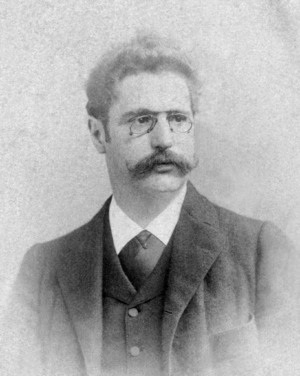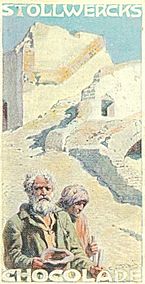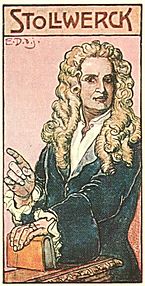Emil Doepler facts for kids
Emil Doepler (born October 29, 1855, in Munich; died December 21, 1922, in Berlin) was a talented German artist. He was an illustrator, a graphic designer, and an expert in heraldry. Heraldry is the study of coats of arms and symbols. People often called him "The Younger" to tell him apart from his father, who was also named Emil Doepler.
Contents
Early Life and Artistic Beginnings
Emil Doepler's father, Carl Emil Doepler, was also a famous artist. He was an illustrator and a designer. His father was in charge of costumes at the Bayreuth Festival. He was also Emil's first art teacher.
From a young age, Emil was very interested in heraldry. He also enjoyed painting landscapes. These are pictures of nature scenes. He painted still-lifes too. These are pictures of objects like fruit or flowers.
Education and Teaching Career
In 1870, Emil Doepler began studying art. He went to a special school in Berlin. This school was connected to the Arts and Crafts Museum. After finishing his studies in 1873, he started working as a freelance illustrator. This means he worked for himself.
He continued to learn more about art. From 1876 to 1877, he took more classes. These were at the Prussian Academy of Arts. In 1881, he became a teacher at the Arts and Crafts Museum. He was promoted to a Professor in 1889.
Designing for Books and Businesses
In 1888, Emil Doepler designed a special coat of arms. This was for a group called the Börsenverein des Deutschen Buchhandels. This group represents German book publishers. The coat of arms included a Latin motto. It said "Habent sua fata libelli," which means "books have their destiny."
He also created many designs for the Stollwerck chocolate company. He made advertisements and signs. He even designed pictures for their trading cards. In 1898, he led a special committee. This committee made sure the Stollwerck pictures were artistic. Other famous artists were part of this group.
In 1899, he designed different ways to write the company's name. He used a style called Art Nouveau. Later, one of his students, Elli Hirsch, added a crown to his design. This became the company's official logo. Emil Doepler married Elli Hirsch in 1909.
Official German Symbols
Emil Doepler is famous for designing Germany's official coat of arms. In November 1919, Friedrich Ebert was the President of the Weimar Republic. He chose one of Doepler's designs. This design was used as Germany's main symbol until 1928.
After 1928, it was still used for special purposes. For example, it appeared on flags for official cars. When West Germany was formed in 1949, they also used his design. Emil Doepler's designs are also used as the coats of arms for the cities of Essen and Bochum.
See also
 In Spanish: Emil Doepler para niños
In Spanish: Emil Doepler para niños




